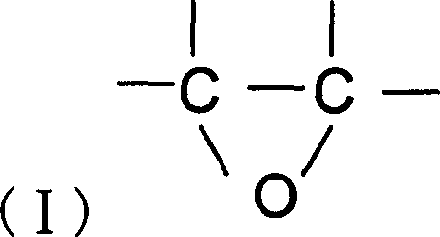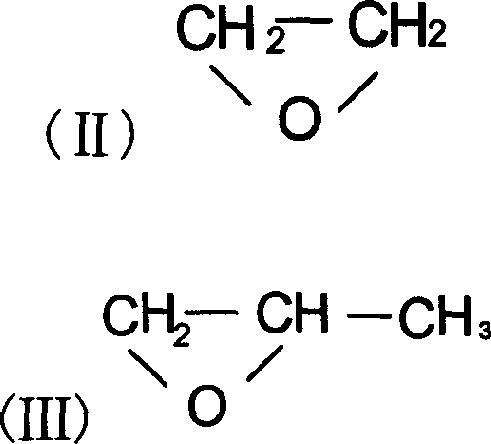Process for production of alkyllene oxide polymers
A technology of alkylene oxide and production method, which is applied in the field of production of alkylene oxide polymers, and can solve the problems of low reproducibility of polymerization degree, agglomeration, and inability to obtain yield of polymers.
- Summary
- Abstract
- Description
- Claims
- Application Information
AI Technical Summary
Problems solved by technology
Method used
Image
Examples
Embodiment 1
[0026] (Catalyst preparation)
[0027] First, place the 200cm 3 The four-necked flask was replaced with nitrogen. The flask was connected to a stirrer, cooling tube and dropping funnel.
[0028] Next, in this flask, 18.3 g of 2-methylpentane (manufactured by Wako Pure Chemical Industries, Ltd.) as a solvent and 47.7 g of high-boiling aliphatic hydrocarbon (trade name: No. 0 solvent, Nippon Oil Corporation, Ltd.) were charged. ) and 7.4 g (0.06 mol) of diethylzinc (manufactured by Nippon Special Chemical Industry Co., Ltd.) were prepared as a mixed solution.
[0029] Next, while vigorously stirring the above mixed solution at 10° C., 4.3 g of 1,4-butanediol was dropped into the solution in small portions over 1 hour. After completion of the dropwise addition, reaction was performed at 30° C. for 1 hour while stirring, and then reaction was further performed at 50° C. for 1 hour while stirring.
[0030] Thereafter, 3.6 g of ethanol (manufactured by Nippon Ethanol Marketing C...
Embodiment 2
[0036] 1,000cm after nitrogen replacement 3 345g of 3-methylpentane (manufactured by Wako Pure Chemical Industry Co., Ltd.) and 0.47g of the catalyst obtained in Example 1 (the content of zinc is 0.5mmol) were charged as a solvent, and the catalyst was stirred to Disperse evenly in the solvent.
[0037] Next, 84 g (1.91 mol) of ethylene oxide (manufactured by Nippon Shokubai Co., Ltd.) was added, the container was sealed with a stopper, and polymerization reaction was performed for 2 hours while stirring in a constant temperature water bath at 40°C.
[0038] After the polymerization reaction was completed, the white product was isolated from the solvent by filtration, and then dried under reduced pressure at 40° C. for 5 hours to obtain 77 g of polyethylene oxide. In this example, the yield of polyethylene oxide relative to ethylene oxide was 91.7%.
Embodiment 3
[0040] 1,000cm after nitrogen replacement 3 In a pressure-resistant container, add 345g of 2-methylpentane (manufactured by Wako Pure Chemical Industry Co., Ltd.) as a solvent and 0.94g of the catalyst obtained in Example 1 (the content of zinc is 1.0mmol), and the catalyst is made uniform by stirring. dispersed in the solvent.
[0041] Next, 75 g (1.70 mol) of ethylene oxide (manufactured by Nippon Shokubai Co., Ltd.) and 11 g (0.19 mol) of propylene oxide (manufactured by Nippon OXIRANE Co., Ltd.) were added and the container was sealed with a stopper, and then, at a constant temperature of 40° C. The polymerization reaction was performed for 2 hours while stirring in a water bath.
[0042] After the polymerization reaction, the white product was isolated from the solvent by filtration, and dried under reduced pressure at 40° C. for 5 hours to obtain 77 g of an ethylene oxide / propylene oxide copolymer. In this example, the yield of the ethylene oxide / propylene oxide copoly...
PUM
 Login to View More
Login to View More Abstract
Description
Claims
Application Information
 Login to View More
Login to View More - R&D
- Intellectual Property
- Life Sciences
- Materials
- Tech Scout
- Unparalleled Data Quality
- Higher Quality Content
- 60% Fewer Hallucinations
Browse by: Latest US Patents, China's latest patents, Technical Efficacy Thesaurus, Application Domain, Technology Topic, Popular Technical Reports.
© 2025 PatSnap. All rights reserved.Legal|Privacy policy|Modern Slavery Act Transparency Statement|Sitemap|About US| Contact US: help@patsnap.com



